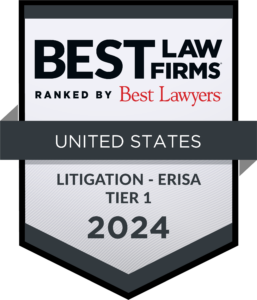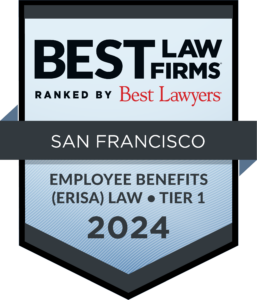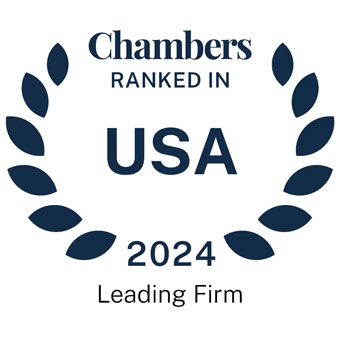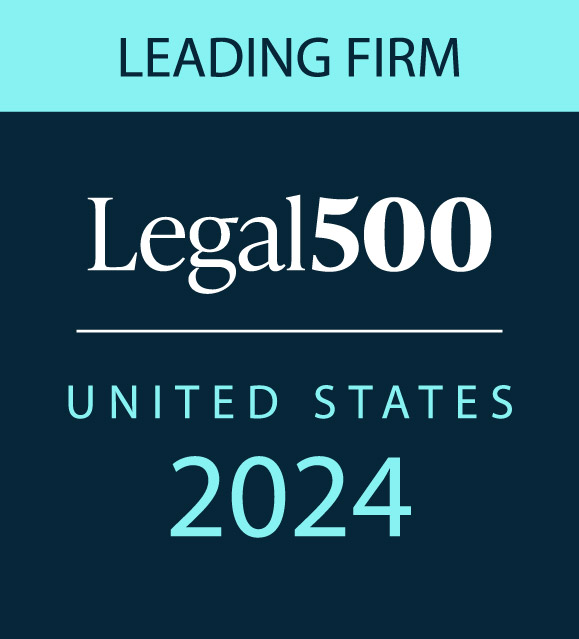Benefits Report: Special Bulletin





If all had gone according to the Department of Labor’s (the “DOL’s”) plan, the final Retirement Security Rule issued on April 25, 2024[1] (2024 Fiduciary Rule) would currently be the law of the land, replacing the near fifty-year-old regulatory test (the “1975 Regulation”) defining an investment advice fiduciary. However, on two consecutive days this past summer, July 25 and 26, 2024, district courts in the Eastern District (Consumer Choice[2]) and Northern District (American Council[3]) of Texas granted plaintiffs’ motions to stay the 2024 Fiduciary Rule’s September 23, 2024, effective date, which ostensibly stopped application of the rule and its accompanying regulatory package in its tracks.[4] These two cases are far from novel, resembling the 2018 Chamber case which ultimately led to the demise (vacatur) of the 2016 Fiduciary Rule regulatory package. [5]
Brushing up against the 60-day window to appeal, on September 20 and 21st, 2024, the DOL filed notices of appeal in both district court cases to the United States Court of Appeals for the Fifth Circuit. On October 2, 2024, the Consumer Choice court granted the parties’ request to stay proceedings until the DOL’s pending appeal is resolved. A day later, the American Council court granted an equivalent motion. On November 4, 2024, the cases were consolidated and the DOL filed its appellant brief with the Court by an extended deadline of December 20, 2024.[6]
Having successfully preserved its right to litigate the matter at the Fifth Circuit Court of Appeals, the DOL must have considered it had at least some paths to success in the face of clear and unrelenting Fifth Circuit precedent set forth in Chamber. Post election, given the political landscape on which the battle will be fought (or not fought at all), the 2024 Fiduciary Rule may be heading to purgatory once again.
“Defendants arguments are nothing more than an attempt to relitigate the Chamber decision.” Unreserved in its apparent displeasure with the 2024 Fiduciary Rule, the American Council court found that the Plaintiffs were “virtually” certain to succeed on the merits,” and that the “Defendants arguments are nothing more than an attempt to relitigate the Chamber decision.” Both district courts’ determinations on whether to stay the 2024 Fiduciary Rule looked to the traditional four equitable factors for injunctive relief under the Administrative Procedures Act: (1) plaintiff’s likelihood of success on the merits; (2) the threat of irreparable harm without a stay; (3) whether other interested parties will be irreparably injured by a stay; and (4) the public interest. Both Texas district courts found all four equitable factors weighed in favor of the plaintiffs, leading to a stop in implementing the 2024 Fiduciary Rule.
Texas Districts Courts Refuse to Roll Over on Rollovers. One of the key objectives of the 2024 Fiduciary Rule was to address the lack of fiduciary oversight surrounding advice related to rollovers of assets from ERISA-governed employer sponsored plans to IRAs. The DOL addressed this concern by seeking to codify one-time rollover advice as fiduciary investment advice in the regulation. For a more detailed discussion, see our article on the 2024 Fiduciary Rule. Unimpressed, the Consumer Choice court reminded the parties that the DOL had raised concerns[7] regarding rollover advice that escaped fiduciary scrutiny in its vacated 2016 Fiduciary Rule,[8] wherein it targeted the regular basis and primary basis requirements of the 1975 regulation “because the agency wanted to expand the meaning of ‘fiduciary’ to encompass ‘one-time transactions like IRA rollovers’.” The Consumer Choice court reasoned the DOL 2024 Fiduciary Rule design contained the same mistake that led Chamber to set aside the 2016 Fiduciary Rule, in that it captured transactions that did not involve “relationship[s] of trust and confidence,” which are the focus of ERISA. Specifically, the court explained, “it is ordinarily inconceivable that financial salespeople or insurance agents will have an intimate relationship of trust and confidence with prospective purchasers when making a one-time rollover recommendation” and, for that reason alone, the 2024 Fiduciary Rule fails.[9]
Citing Chamber, the American Council court emphasized there was an “important distinction” between insurance agents and brokers, in that insurance agents and brokers are compensated only for completed sales, whereas investment advisers are paid fees because they render advice. The court explained Chamber previously determined the statutory meaning of “fiduciary” codified the common law understanding as a relationship of trust and confidence between a fiduciary and their client, recognizing that “ERISA embraced the industry distinction between investment advice and mere sales conduct.” By tying fiduciary status to “advice for a fee,” American Council further explained that Congress intended that the purpose of the fee is for advice and not sales. In doing so, American Council attacked the 2024 Fiduciary Rule’s functional, context-based approach for defining an investment advice fiduciary, which fixed fiduciary status based on the characteristics of the parties in the advice-relationship and the circumstances under which the advice was given— stating, “ERISA does not define fiduciary in functional terms and instead restricts an investment-advice fiduciary to a common law understanding.”
Outcomes Matter and Relitigating Chamber is likely a Dead End. Consumer Choice recounted Chamber, stating that in 2016 the DOL made “no secret of its intent to transform the trillion-dollar market for IRA investments, annuities and insurance products” by expanding the definition of an investment advice fiduciary from the 1975 regulation and “exploiting an exemption provision into a comprehensive regulatory framework.”[10] As far as Fifth Circuit challenges go, it seems that no matter the method by which the DOL seeks to capture one-time transactions like roll overs through rulemaking, both American Council and Consumer Choice are quite clear that if the ultimate outcome is nothing more than an expansion of the definition of an investment advice fiduciary to encompass one-time advice related to rollover transactions, then Fifth Circuit precedent precludes such efforts. In addition, both courts rebuked the DOL’s attempts to, in their opinion, relitigate Chamber. The DOL seemingly believed the 2024 Fiduciary Rule would not be dispensed of so readily by the district court, perhaps believing it had a stronger hand with which to fight the battle at the appellate stage.
In any case, it remains dubious as to whether the DOL under the Trump administration will continue with its appeals, or simply withdraw. Depending on the approach, the new administration’s position could result in the 2024 Fiduciary Rule facing the same fate as the 2016 Fiduciary Rule, deepening the precedent of Chamber and dampening efforts to redefine “investment advice fiduciary” in the years to come.
If you have questions about the status of the 2024 Fiduciary Rule and its future, please contact us.
[1] Retirement Security Rule: Definition of an Investment Advice Fiduciary, 89 Fed. Reg. 32122 (Apr. 25, 2024)
[2] Fed’n of Ams. for Consumer Choice, Inc. v. U.S. Dep’t of Lab. (Consumer Choice), No. 6:24-CV-163-JDK, 2024 WL 3554879 (E.D. Tex. July 25, 2024).
[3] Am. Council of Life Insurers v. U.S. Dep’t of Lab. (American Council), No. 4:24-CV-00482-O, 2024 WL 3572297 (N.D. Tex. July 26, 2024).
[4] More specifically, pursuant to authority granted it under Section 705 of the Administrative Procedure Act, the court in Consumer Choice indefinitely stayed the effective date of the 2024 Fiduciary Rule and the amendment to Prohibited Transaction Exemption 84-24 to provide “complete relief” with the “less drastic remedy” during the pendency of the “suit and any appeal.” A day later, the court in American Council indefinity stayed the effectives dates of the 2024 Fiduciary Rule and PTEs 75-1, 77-4, 80-83, 83-1, 84-24, 86-128, and 2020-02.
[5] The DOL’s 2016 Fiduciary Rule vacatur was upheld by Chamber of Commerce v. U.S. Dep’t of Lab., 885 F.3d 360 (5th Cir. 2018).
[6] See Brief for Defendant-Appellant, Fed’n of Ams. for Consumer Choice, Inc. v. U.S. Dep’t of Lab., No. 24-40637 (5th Cir. Dec. 20, 2024). On the same day, AARP, AARP Foundation, and the Public Investors Advocate Bar Association filed an amicus curiae brief in support of the 2024 Fiduciary Rule. See Brief for AARP, et al. as Amici Curiae Supporting Defendant-Appellant, Fed’n of Ams. for Consumer Choice, Inc. v. U.S. Dep’t of Lab., No. 24-40637 (5th Cir. Dec. 20, 2024).
[7] The DOL had raised concerns that the 1975 Regulation was archaic and “unduly exclude[ed] a sizable portion of modern retirement investment advice” from ERISA’s fiduciary standard.” Defendant’s Response in Opposition of Motion to Stay, at 12 n.4, Consumer Choice, No. 6:24-CV-163-JDK, 2024 WL 3554879 (E.D. Tex. July 25, 2024).
[8] Definition of the Term “Fiduciary”; Conflict of Interest Rule—Retirement Investment Advice, 81 Fed. Reg. 20946 (Apr. 8, 2024).
[9] The Consumer Choice court also found that one time rollover and annuity recommendations exceed the DOL’s regulatory authority by “unabashedly” and “impermissibly conflating the basic division drawn by ERISA” between the fiduciary division imposed on Title I (employer sponsored plan) and Title II (IRA).
[10] The Consumer Choice court notes that industry professionals availing themselves of PTE 84-24 under the amended standard must adherer to care and loyalty obligations, which amounts to the “DOL once again “exploit[ing] an exemption provision into a comprehensive regulatory framework.”
Nick White
As we close out 2024, I cannot help but reflect again on the 50th anniversary of ERISA and what the passage of that law has meant to me, and the impact it has had on my life. When I graduated from law school, I was under the misguided impression that I wanted to be a civil litigator. It took only a few months of practice for me to realize I needed to take another path – and quickly!
Fortunately, both my father-in-law and my law school bulletin came to the rescue. My father-in-law, who had retired from the IRS, told me about this “branch” of the IRS that ruled on retirement plan documents and enforced the pension rules, and he thought “you might like this type of work ₋ it’s like reviewing contracts and you need to be good at reading the law.” Although one of my favorite classes in law school was contracts, my immediate reaction was not favorable. Me? Work at the IRS? I don’t think so. But, at about the same time, my law school bulletin came out and it contained an advertisement from the IRS’ Employee Plans and Exempt Organizations Division (the “EP/EO Division,” now known as the Tax Exempt & Government Entities Division or “TE/GE Division”) for the very type of job my father-in-law had suggested. It caused me to pause and think — Hey, I can go work for the IRS for two or three years and acquire knowledge in an area of law not many lawyers know about, make valuable connections, and then go back into private practice and achieve fame and fortune!
Long story short, I ended up applying for and getting that job, and it worked out so well I stayed nine years before going back to private practice. And yes, I did acquire unique knowledge and skills, and I did have the opportunity to work with a number of fantastic people in the TE/GE Division ₋ some of whom I am still in contact with today. As for fame, maybe not so much, but in terms of fortune, yes, I have been blessed to earn a good living and, along with my wife, provide well for my family. Win-Win-Win!
And the practice of ERISA really hit a sweet spot for me. As mentioned, I enjoy the contractual analysis involved in plan document work, understanding that ERISA-covered plans often state they do not amount to a contract! I also enjoy parsing statutory and regulatory language, as well as government agency guidance. And I have always felt particularly satisfied in knowing that if I do my job well, I’m part of ensuring the important protections of ERISA ₋ and those protections positively impact the lives of real people each and every day.
ERISA has also provided me with the opportunity to participate in committee work for valuable national and regional industry groups, such as the American Society of Pension Professionals and Actuaries (ASPPA), the National Institute of Pension Administrators (NIPA), and the Western Pension & Benefits Council (WPBC), and speak at their conferences and write for their publications. I could not have imagined when I graduated from law school that some of my closest friends and people I respect the most are current and former IRS and Department of Labor employees, third-party administrators, actuaries and, yes, ERISA lawyers. I owe so much to these organizations, and the wonderful people who make them work, for being such an important part of my life. They have given me much more than I could ever repay.
I must note that this year’s Annual Dinner of the American College of Employee Benefits Counsel (ACEBC) was truly special. We Fellows gathered in September from all over the country in Washington, DC to celebrate 50 years since President Gerald R. Ford signed ERISA into law, appropriately on Labor Day. The opportunity to celebrate such a milestone for a law as important and personally impactful as ERISA would have been enough for me; however, to be there with so many close and long-standing friends, including six of my Trucker Huss collegues who are ACEBC Fellows, made the event even more special. Better yet, we were all there to witness and celebrate the induction of our colleague Joe Faucher as a Fellow.
Joe and I first met when I was seeking to go back into private practice in 1997, and he interviewed me for job at the “his” firm. He wasn’t so sure I was right for the job (in retrospect, a reasonable concern!), but I got it anyway and we’ve gone on to practice together at two law firms over the past 27 years, partnering in our effort to further the purposes of ERISA. My long-standing work and personal relationship with people like Joe is a perfect example of what ERISA has made possible for me, and why I have found the practice area so satisfying and rewarding for over the past 35+ years.
For all of what I have shared above, thank you . . . ERISA. And thank you to all the wonderful, dedicated folks I’ve been privileged to meet and work with along the way!
Mary Powell
An important reason I was drawn to the practice of employee benefits is because so many U.S. workers rely on the health and retirement benefits offered by employers. It is an area of law where you can have a real impact on people’s lives. As a benefits lawyer, you have the ability to work with employers to be creative about the benefits provided to employees — benefits that are needed for the financial well-being of employees and their families. And you have the opportunity to work with government agencies to inform them of major issues facing employers in offering benefits, and brainstorm with them to find solutions.
Much of the employee benefits rules live in the federal tax code. I think that one way to see what we value in America is to read the federal tax code. It has a profound effect on healthcare and savings. These rules provide incentives for employers to offer employee benefit programs to employees and they encourage employees to take advantage of those programs.
While employee benefits may seem like a narrow field of law — it is not! I started off working on executive compensation/equity compensation matters. This area teaches you a lot about the basic corporate structure. I then moved on to work on retirement plans, where I worked with employers to establish and maintain programs that assist employees with long-term savings. I later transitioned to healthcare and it is my true love — and that has been a crazy ride!
Examples of healthcare legislation that has passed while I have been practicing law include the privacy rules in the Health Insurance Portability and Accountability Act (HIPAA), which ensure that people have access to their own health information and that such information is protected, and the Affordable Care Act, which benefits lawyers helped to enact, that expands (or gives access to) health coverage for millions of Americans. And now employee benefits lawyers are part of the team that is working to bring down health care costs through implementation of the transparency rules enacted under the Consolidated Appropriations Act of 2021.
Employee benefits is an exciting area of law that will continue to evolve. I am lucky to be a part of it!
Scott Galbreath
I owe much of my career to that legislation enacted 50 years ago, on Labor Day, known as the Employee Retirement Income Security Act of 1974 (ERISA). I am grateful that ERISA became a recognized legal practice area, as I enjoy assisting clients in navigating its complexities.
I first became aware of ERISA when I was in law school in 1984. My school may have been the only law school with a JD level course on employee benefits. I was interested in tax law and took the class because of its tax emphasis. The course was taught by Professor Howard Sherman, who had written the textbook Cases and Materials on Pension Planning and Deferred Compensation. He had gone to work for the Office of the Tax Legislative Counsel in the Department of the Treasury just a year after ERISA was signed into law.
In Professor Sherman’s class I learned that tax-qualified plans are an authorized tax shelter, because the employer gets a current tax deduction for contributions to the plan while the employees do not recognize income until they receive their benefits. This is an exception to the normal rule that an employer can take a deduction only when the employee receives income and, thus, serves as an incentive for employers to adopt tax-qualified plans. I also learned about ERISA’s various safeguards for protecting the benefits promised to employees, and that the law had been enacted principally in reaction to what happened to the employees of Studebaker Corporation in South Bend, Indiana, when in 1963 the company shutdown and defaulted on its pension obligations.
Since ERISA was relatively new when I graduated law school in 1986, I felt it presented a good opportunity to specialize in what would likely be an emerging field of law. My first position as an associate attorney was working for a small, fledgling Chicago firm specializing in representing tax-exempt organizations that had spun off from larger firms. I was the sole employee benefits practitioner for the firm. I learned quickly that tax- exempt organizations have unique considerations and, for that reason, unique plans when it comes to employee benefits. I became quite versed in 457 plans and how they are similar to nonqualified plans.
Then, as my career progressed, I became more interested in executive compensation and nonqualified plans that provide executives with greater benefit limits than qualified plans, and that are exempt from much of ERISA’s compliance rules. When Code section 409A was enacted in 2004, it created the opportunity to specialize in a new area, just as ERISA did thirty years earlier.
Now, a substantial part of my practice is analyzing and designing deferred compensation plans and other Executive Compensation techniques to be exempt from or comply with Code section 409A. I also regularly work with employers to assist them in correcting compliance failures that have occurred in their ERISA-covered plans.
I find assisting employers in their efforts to help their employees, including executives, save for retirement to be very rewarding. For this reason, I enthusiastically celebrate the 50th anniversary of ERISA.
The Trucker Huss Benefits Report is published monthly to provide our clients and friends with information on recent legal developments and other current issues in employee benefits. Back issues of the Benefits Report are posted on the Trucker Huss website (www.truckerhuss.com)
Editor: Nicholas J. White, nwhite@truckerhuss.com
In response to new IRS rules of practice, we inform you that any federal tax information contained in this writing cannot be used for the purpose of avoiding tax-related penalties or promoting, marketing or recommending to another party any tax-related matters in this Benefits Report.
135 Main Street, 9th Floor
San Francisco, California 94105-1815
15760 Ventura Blvd, Suite 910
Los Angeles, California 91436-3019
329 NE Couch St., Suite 200
Portland, Oregon 97232-1332
Tel: (415) 788-3111
Fax: (415) 421-2017
Email: info@truckerhuss.com
Website: www.truckerhuss.com
Copyright © 2024 Trucker Huss. All rights reserved. This newsletter is published as an information source for our clients and colleagues. The articles are current as of the date of publication, are general in nature and are not the substitute for legal advice or opinion in a particular case.
135 Main Street, 9th Floor
San Francisco, CA 94105-1815
15760 Ventura Boulevard, Suite 910
Los Angeles, CA 91436-2964
329 NE Couch Street, Suite 200
Portland, OR 97232-1332
135 Main Street, 9th Floor
San Francisco, CA 94105-1815
15760 Ventura Boulevard, Suite 910
Los Angeles, CA 91436-2964
329 NE Couch Street, Suite 200
Portland, OR 97232-1332



